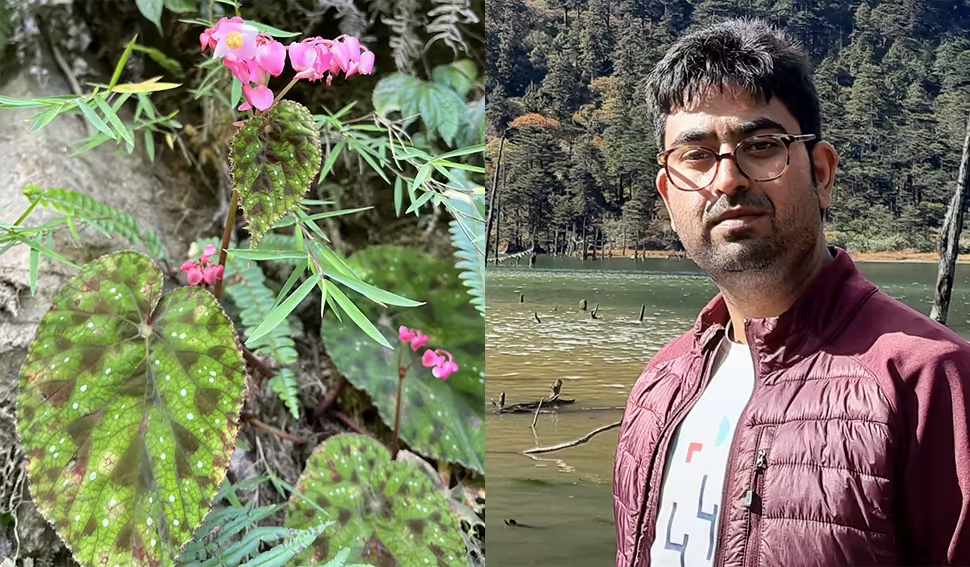USTM scientist discovers new plant species in Arunachal’s Dibang Valley

A new species of flowering plant, Begonia neisti B. Hajong, N. Bhat & P. Bharali, has been discovered in the remote Dibang Valley of Arunachal Pradesh.
This remarkable discovery was made by a research team led by Dr. Nazir Ahmad Bhat, an Assistant Professor at the University of Science and Technology Meghalaya (USTM), in collaboration with Bipankar Hajong, a Ph.D. Scholar at CSIR-North East Institute of Science and Technology (CSIR-NEIST), and Dr. Pankaj Bharali, a Senior Scientist at CSIR-NEIST, Jorhat.
Bhat explained that Begonia neisti is distinguished by its variegated leaves, which display unique white-silver circular spots and dark brownish-red patches near the vein junctions. The plant also features large leaves and a striking white stripe on its stems and petioles, making it stand out from other Begonia species. This species was found flourishing on moist, hilly slopes along roads between Hunli and Anini, with its flowering season occurring from November to January.
The discovery was confirmed through advanced molecular phylogenetic analysis using the ITS2 marker, which showed close evolutionary ties to other Begonia species, particularly those in the Platycentrum section from the Indian subcontinent. The research was published in the prestigious Nordic Journal of Botany (John Wiley & Sons Ltd), where the team provided in-depth insights into the plant’s morphology, genetic makeup, and ecological significance.
Despite being newly discovered, Begonia neisti has been classified as Data Deficient (DD) under the IUCN Red List criteria due to the lack of comprehensive population data. However, the species’ habitat faces threats from ongoing road expansion in the Dibang Valley, raising concerns about its long-term survival. Conservationists are advocating for immediate monitoring and protective measures to preserve this unique species. This discovery underscores the rich biodiversity of Arunachal Pradesh and highlights the need for continued botanical research in the region.

Leave a Reply